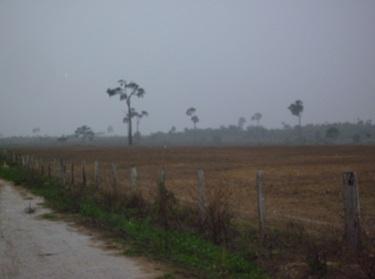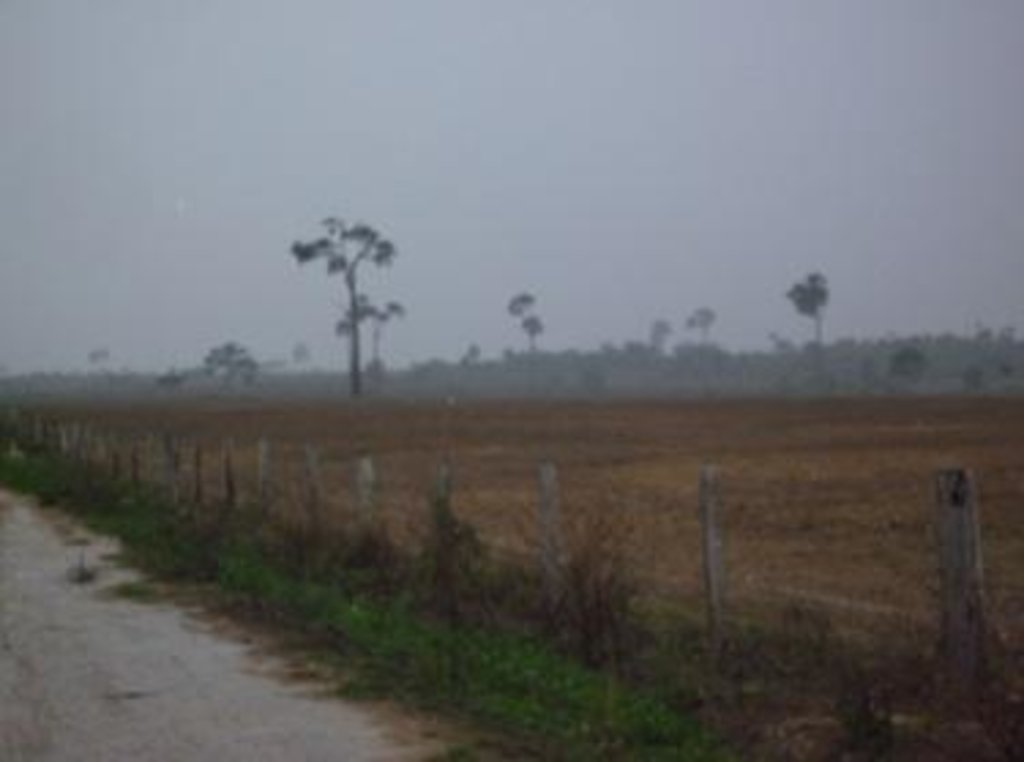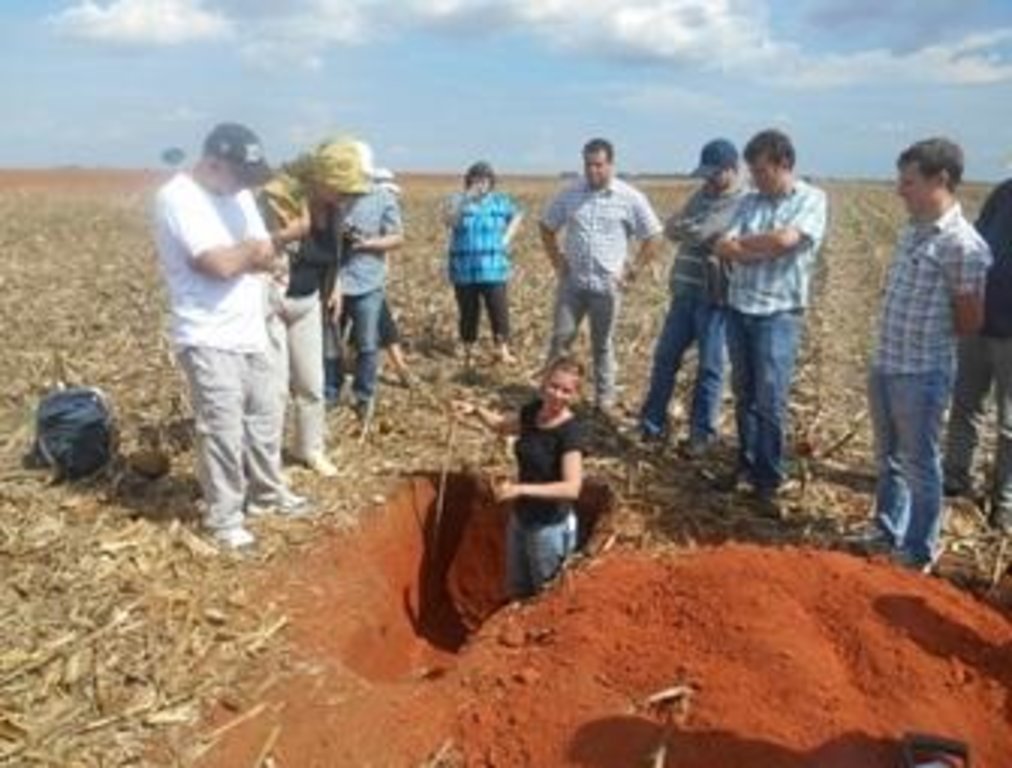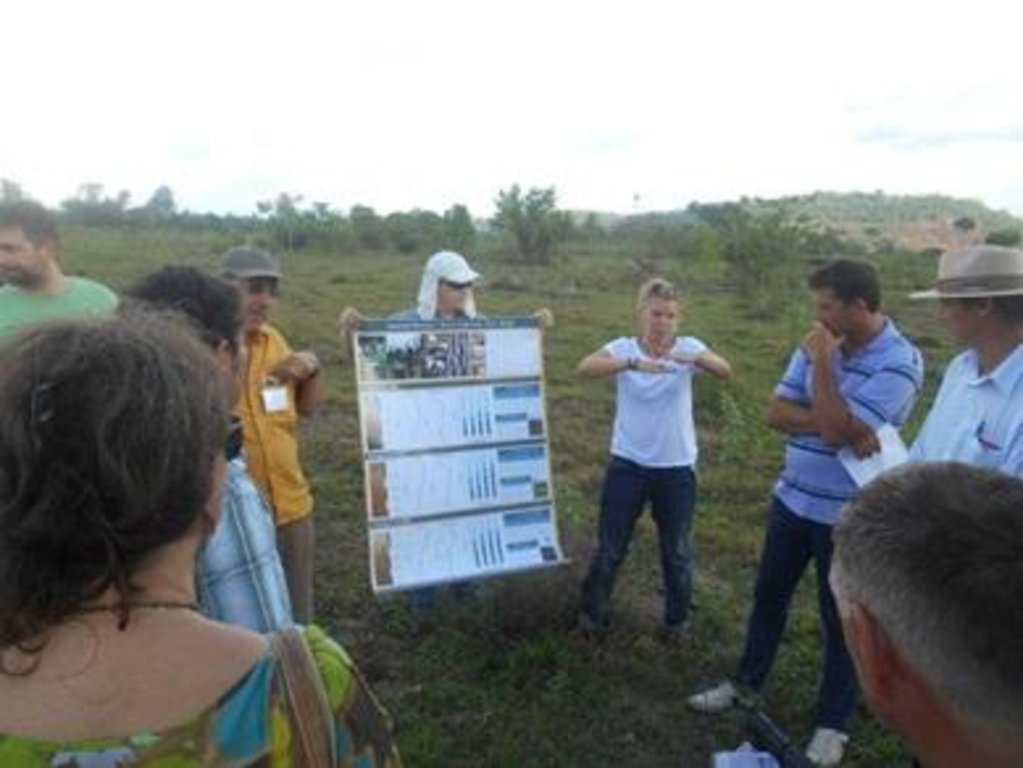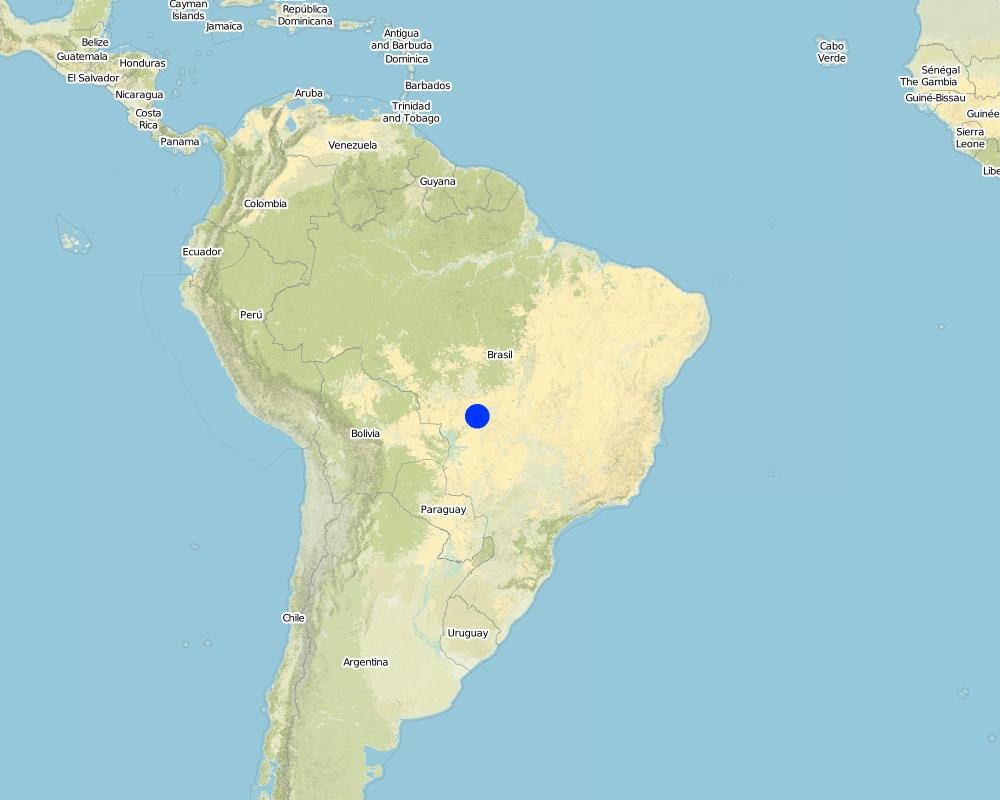Carbon stocks, turnover and nutrient budgets in soil along land-use and climatic gradients [Brésil]
- Création :
- Mise à jour :
- Compilateur : Stefan Hohnwald
- Rédacteur : –
- Examinateur : Fabian Ottiger
Estoque de Carbono
approaches_2529 - Brésil
Voir les sections
Développer tout Réduire tout1. Informations générales
1.2 Coordonnées des personnes-ressources et des institutions impliquées dans l'évaluation et la documentation de l'Approche
Personne(s) ressource(s) clé(s)
Spécialiste GDT:
Strey Simone
Hoffmann@ifbk.uni-hannover.de
Institute of Soil Science, University of Hannover
Herrenhäuser Str. 2, 30419 Hannover
Brésil
Spécialiste GDT:
Strey Robert
Institute of Soil Science, University of Hannover
Brésil
Spécialiste GDT:
Boy Jens
Institute of Soil Science, University of Hannover
Brésil
Spécialiste GDT:
Guggenberger Georg
Institute of Soil Science, University of Hannover
Brésil
Nom du ou des institutions qui ont facilité la documentation/ l'évaluation de l'Approche (si pertinent)
Institute of Soil Science, University of Hannover - Allemagne1.3 Conditions relatives à l'utilisation par WOCAT des données documentées
Quand les données ont-elles été compilées (sur le terrain)?
12/06/2015
Le compilateur et la(les) personne(s) ressource(s) acceptent les conditions relatives à l'utilisation par WOCAT des données documentées:
Oui
2. Description de l'Approche de GDT
2.1 Courte description de l'Approche
Find carbon optimized land management practices.
2.2 Description détaillée de l'Approche
Description détaillée de l'Approche:
Aims / objectives: (1) determine the native background stocks of N, P, K, Mg, Ca, and S in soil to a depth of 10 m in the native systems (rain forest and Cerrado).
(2) determine the temporal change in C and nutrient stocks using space-for-time substitution along the pioneer front gradient from central Mato Grosso to south Pará to assess the influence of land use on C and nutrient budgets.
(3) analyze the stocks of bulk C and of C in soil fractions differing in function and turnover to determine the influence of land use and soil management on distribution of SOM into different pools (i.e., analysis of the quantity and quality of C storage in soil).
(4) quantify the C turnover in these fractions by a combination of the stable C isotope and the 14C approaches (i.e., analysis of the sustainability vs. vulnerability of C storage in soil as affected by land use and soil management).
(5) assess the influence of climatic change on these parameters along the climatic gradient from central Mato Grosso to south Pará (i.e., analyze the sustainability vs. vulnerability of C storage in soil as affected by climate change).
(6) parameterize a C and N turnover model (e.g. CANDY, Rühlmann et al. 2006) at plot level and calculate different land-use and climate-change scenarios.
Methods: Analysing carbon stocks – sampling laboratory work (Elementar analyses).
Soil properties of the two most common soil types (texture, bulk density, pH, plant available nutrients, etc.).
Modelling– model the process of carbon storage after land-use change.
Stages of implementation: Transport into meanings – translate scientific results into recommendations for farmes which land-use type is most carbon friendly.
Role of stakeholders: Implementation of land use decision– depending on the soil properties.
2.3 Photos de l'approche
2.5 Pays/ région/ lieux où l'Approche a été appliquée
Pays:
Brésil
Région/ Etat/ Province:
Mato Grosso, Pará
Autres spécifications du lieu :
Novo Progresso, Sinop, Cuiabá
Map
×2.6 Dates de début et de fin de l'Approche
Indiquez l'année de démarrage:
2011
Date (année) de fin de l'Approche (si l'Approche n'est plus appliquée):
2016
2.7 Type d'Approche
- fondé sur un projet/ programme
2.8 Principaux objectifs de l'Approche
The Approach focused mainly on SLM with other activities (soil organic carbon pools)
Analyze the impact of different land use types on soil organic carbon storage after deforestation.
The SLM Approach addressed the following problems: the meaning of scientific results to farmers – there is no real importancy for them how much carbon is in their soil
The problem is that the whole climate change debate is based on Carbon, however by land use shift from rainforest to pasture or crop fields, soil organic carbon is not the parameter which is the most important, nevertheless is always in the focus if land-use change is discussed.
2.9 Conditions favorisant ou entravant la mise en œuvre de la(des) Technologie(s) appliquée(s) sous l'Approche
normes et valeurs sociales/ culturelles/ religieuses
- entrave
They only do what they know – new ideas are hard to implement.
Treatment through the SLM Approach:
disponibilité/ accès aux ressources et services financiers
- entrave
Small farmers have no money to manage their land carbon friendly.
Treatment through the SLM Approach:
cadre juridique (régime foncier, droits d'utilisation des terres et de l'eau)
- entrave
Land titles are not clarified.
Treatment through the SLM Approach:
The existing land ownership, land use rights / water rights greatly hindered the approach implementation If farmers do not own the land by law they will not invest in protecting their land or invest in programs with duration over more than 5 years.
3. Participation et rôles des parties prenantes impliquées dans l'Approche
3.1 Parties prenantes impliquées dans l'Approche et rôles
- exploitants locaux des terres / communautés locales
Small Farmers with limited income; indigenous– Kayapó.
Women are not really active in the Brazilian agriculture.
- Spécialistes de la GDT/ conseillers agricoles
- enseignants/ élèves/ étudiants
- ONG
- secteur privé
- gouvernement national (planificateurs, décideurs)
- organisation internationale
3.2 Participation des exploitants locaux des terres/ communautés locales aux différentes phases de l'Approche
| Participation des exploitants locaux des terres/ communautés locales | Spécifiez qui était impliqué et décrivez les activités | |
|---|---|---|
| initiation/ motivation | passive | The land users and communities were contacted by the research project. |
| planification | interactive | Active in giving us allowance for our research. |
| mise en œuvre | soutien extérieur | Giving us a platform to present our results- communities. |
| suivi/ évaluation | aucun | Until now not happening. |
| Research | passive |
3.4 Prises de décision pour la sélection de la Technologie/ des Technologies
Indiquez qui a décidé de la sélection de la Technologie/ des Technologies à mettre en œuvre:
- les spécialistes de la GDT seuls
Expliquez:
Decisions on the method of implementing the SLM Technology were made by by SLM specialists alone (top-down)
4. Soutien technique, renforcement des capacités et gestion des connaissances
4.2 Service de conseils
Les exploitants des terres ont-ils accès à un service de conseils?
Oui
Spécifiez si le service de conseils est fourni:
- dans des centres permanents
Décrivez/ commentez:
Name of method used for advisory service: Conferences; Key elements: presenting results, transport into meanings, podium discussion
Advisory service is quite adequate to ensure the continuation of land conservation activities; Results are a basis for further discussions of ‘good practice’ management on community level.
4.3 Renforcement des institutions (développement organisationnel)
Des institutions ont elles été mises en place ou renforcées par le biais de l'Approche?
- oui, un peu
Spécifiez à quel(s) niveau(x), ces institutions ont été renforcées ou mises en place:
- local
Précisez le type de soutien:
- renforcement des capacités/ formation
Donnez plus de détails:
Workshop 'What is carbon?' to indigenous people (Indian tribe Kayapó)
4.4 Suivi et évaluation
Commentaires:
There were no changes in the Approach as a result of monitoring and evaluation
There were no changes in the Technology as a result of monitoring and evaluation
4.5 Recherche
La recherche a-t-elle fait partie intégrante de l’Approche?
Oui
Spécifiez les thèmes:
- écologie
Donnez plus de détails et indiquez qui a mené ces recherches:
Research was carried out both on station and on-farm
5. Financement et soutien matériel externe
5.1 Budget annuel de la composante GDT de l'Approche
Si le budget annuel précis n'est pas connu, indiquez une fourchette:
- 10 000-100 000
Commentez (par ex. principales sources de financement/ principaux bailleurs de fonds):
Approach costs were met by the following donors: government (German Government, BMBF): 100.0%
5.2 Soutiens financiers/ matériels fournis aux exploitants des terres
Les exploitants des terres ont-ils reçu un soutien financier/ matériel pour la mise en œuvre de la Technologie/ des Technologies?
Oui
5.3 Subventions pour des intrants spécifiques (incluant la main d'œuvre)
- équipement
| Spécifiez les intrants subventionnés | Dans quelle mesure | Spécifiez les subventions |
|---|---|---|
| machines | en partie financé | |
| outils | en partie financé | |
Commentaires:
equipment: machinery not financed.
equipment: tools fully financed.
5.4 Crédits
Des crédits ont-ils été alloués à travers l'Approche pour les activités de GDT?
Non
6. Analyses d'impact et conclusions
6.1 Impacts de l'Approche
Est-ce que l'Approche a aidé les exploitants des terres à mettre en œuvre et entretenir les Technologies de GDT?
- Non
- Oui, un peu
- Oui, modérément
- Oui, beaucoup
They have results about their soil properties which may help their agriculture advisers.
Est-ce que l'Approche a autonomisé les groupes socialement et économiquement défavorisés?
- Non
- Oui, un peu
- Oui, modérément
- Oui, beaucoup
Est-ce que l'Approche a amélioré les questions foncières et des droits d'utilisation qui entravent la mise en œuvre des Technologies?
- Non
- Oui, un peu
- Oui, modérément
- Oui, beaucoup
The problem is likely to be overcome in the near future. If the government pushes the land title process forward.
Did other land users / projects adopt the Approach?
- Non
- Oui, un peu
- Oui, modérément
- Oui, beaucoup
Did the Approach lead to improved livelihoods / human well-being?
- Non
- Oui, un peu
- Oui, modérément
- Oui, beaucoup
Until now not clear because it is a long term process.
Did the Approach help to alleviate poverty?
- Non
- Oui, un peu
- Oui, modérément
- Oui, beaucoup
This is not the aim of the approach.
6.2 Principale motivation des exploitants des terres pour mettre en œuvre la GDT
- augmenter la production
- augmenter la rentabilité/ bénéfice, rapport coûts-bénéfices
- réduire la charge de travail
- paiements/ subventions
- règles et règlements (amendes)/ application
- prestige, pression sociale/ cohésion sociale
- affiliation à un mouvement/ projet/ groupe/ réseaux
- conscience environnementale
- améliorer l'esthétique
- well-being and livelihoods improvement
6.3 Durabilité des activités de l'Approche
Les exploitants des terres peuvent-ils poursuivre ce qui a été mis en œuvre par le biais de l'Approche (sans soutien extérieur)?
- incertain
Si non ou incertain, spécifiez et commentez:
The political program concerning land use change needs to be changed or must support the farmers.
6.4 Points forts/ avantages de l'Approche
| Points forts/ avantages/ possibilités du point de vue du compilateur ou d'une autre personne ressource clé |
|---|
|
The possibility to work with indigenous people on the same topic (soil organic carbon) as with farmers. |
6.5 Faiblesses/ inconvénients de l'Approche et moyens de les surmonter
| Faiblesses/ inconvénients/ risques du point de vue du compilateur ou d'une autre personne ressource clé | Comment peuvent-ils être surmontés? |
|---|---|
|
Too much scientific research from top-down on a topic which farmers are not really interested in. |
Plan the project with locals. |
7. Références et liens
7.1 Méthodes/ sources d'information
- visites de terrain, enquêtes sur le terrain
- interviews/entretiens avec les exploitants des terres
Liens et modules
Développer tout Réduire toutLiens
Aucun lien
Modules
Aucun module trouvé


